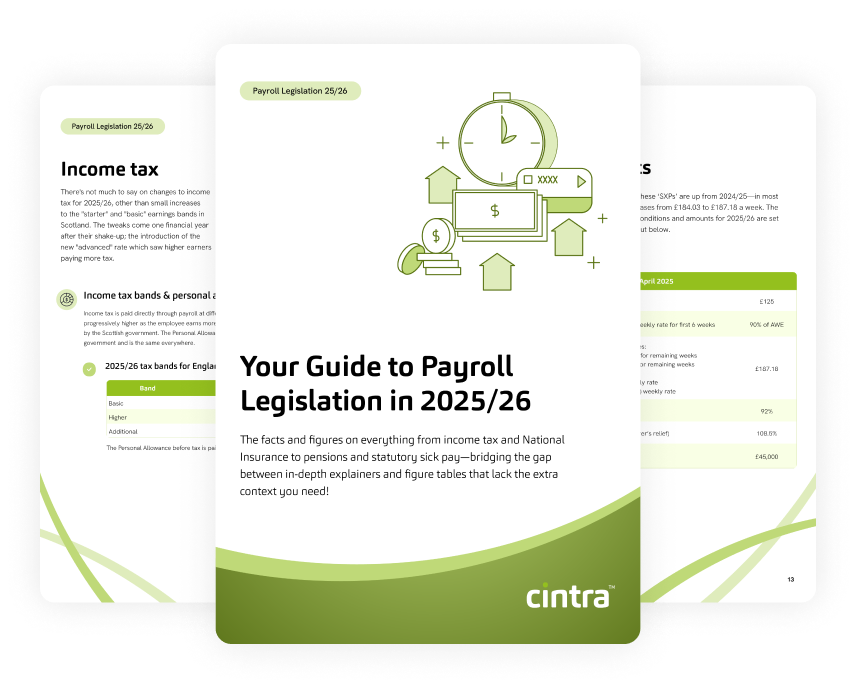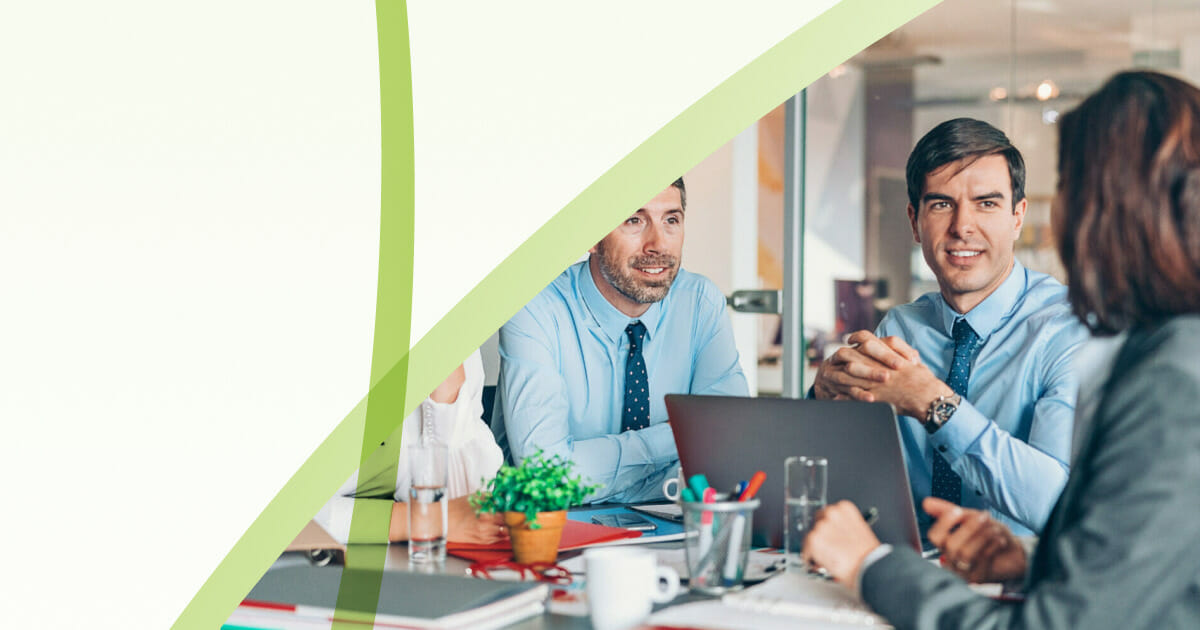Understanding income tax rates and personal allowances can seem tricky at first.
But if you think about it, it’s not that complicated: the UK operates a progressive tax system, meaning the more you earn, the higher the rate at which you’re taxed.
Read on to learn all about personal tax allowance, income tax bands, inheritance tax, National Insurance contributions and more.
Key definitions
Here are some key definitions around income tax rates and personal allowances.
Income tax
Income tax is a tax imposed by the government on an individual’s or entity’s earnings.
These earnings can come from various sources, including wages, salary, pensions, rental income, savings, and investments. The amount of tax an individual or business pays depends on the level of income, with different tax bands and rates applied to different portions of income.
Income tax is collected by the HM Revenue & Customs (HMRC) through mechanisms such as PAYE (Pay As You Earn) for employees and self-assessment for self-employed individuals.
The rates and thresholds can change each tax year, and there are certain allowances and reliefs that may reduce the amount of tax payable.
Personal allowance
Personal allowance is the amount of income an individual in the UK can earn tax-free each tax year.
For the 2025/26 tax year, the standard personal allowance is £12,570. It’s gradually reduced for individuals with an adjusted net income over £100,000, decreasing by £1 for every £2 earned above this threshold.
Those earning over £125,140 receive no personal allowance.
HMRC
HMRC is the government department in the UK responsible for collecting taxes, paying benefits, and making sure people and businesses follow tax laws.
They handle things like income tax, VAT, and IHT, as well as provide support for people who need financial help, like through the Universal Credit system.
Income tax
Basic tax bands
As for the basic bands: there’s a basic rate, higher rate and additional rate in England, Wales, and Northern Ireland.
The income tax rates for 2025/26 are:
| Tax band | Earnings (after personal allowance) | Tax rate |
|---|---|---|
| Basic rate | Up to £37,700 | 20% |
| Higher rate | From £37,701 to £125,140 | 40% |
| Additional rate | Above £125,140 | 45% |
And the income tax rates in Scotland for 2025/26 are:
| Tax band | Earnings (after personal allowance) | Tax rate |
|---|---|---|
| Starter rate | Up to £2,827 | 19% |
| Basic rate | From £2,828 to £14,921 | 20% |
| Intermediate rate | From £14,922 to £31,092 | 21% |
| Advanced rate | From £62,431 to £125,140 | 45% |
| Higher rate | From £31,093 to £62,430 | 42% |
| Top rate | Above £125,140 | 48% |
What about tax codes?
Let’s take a look at the UK tax codes and what they mean:
| Tax code | What they mean | Explanation |
|---|---|---|
| L | Standard personal allowance | You’re entitled to the standard tax-free personal allowance. |
| M | Marriage allowance | You’ve received a transfer of 10% of your partner’s personal allowance. |
| N | Marriage allowance | You’ve transferred 10% of your personal allowance to your partner. |
| T | Other calculations involved | Your tax code includes other calculations (such as company benefits) to determine your personal allowance. |
| 0T | No personal allowance or emergency code | Your personal allowance has been used up, or you’ve started a new job and your employer doesn’t have the details they need to give you a tax code. |
| BR | Basic rate tax code | All your income from this job or pension is taxed at the basic rate (usually used if you’ve got more than one job or pension). |
| D0 | Higher rate tax code | All your income from this job or pension is taxed at the higher rate (usually used if you’ve got more than one job or pension). |
| D1 | Additional rate tax code | All your income from this job or pension is taxed at the additional rate (usually used if you’ve got more than one job or pension). |
| NT | No tax | You’re not paying any tax on this income. |
| W1 | Emergency tax code | Used as an emergency tax code for the current pay period (the “week 1” or “month 1” system), meaning tax is calculated without using your full Personal Allowance. |
| M1 | Emergency tax code | Similar to W1, used as an emergency tax code for the current pay period, typically for those on a month-to-month basis. |
| X | Emergency tax code | Another emergency tax code usually applied when no other tax code is available, and the personal allowance isn’t applied. |
| K | Income exceeding allowance | You have income that isn’t being taxed elsewhere and is worth more than your tax-free Personal Allowance (such as unpaid tax from a previous year or taxable company benefits). |
National Insurance contributions
It isn’t just the ins and outs of tax you need to be aware of, there’s also National Insurance contributions (NICs).
If you’re interested in a comprehensive overview of NICs, you can read all about them in our National Insurance rates and categories guide.
However, if you’re looking for a quick summary, look no further:
- Class 1: This is paid by employees earning over £242 a week and are under the State Pension age.
- Class 1A or 1B: Class 1A NICs and Class 1B NICs are paid on employees’ expenses or benefits.
- Class 2: Since 6 April 2024, self-employed people with profits over £12,570 are no longer required to pay Class 2 NICs. They can, however, choose to make voluntary contributions if they wish.
- Class 3: This is a voluntary top-up employees can make to fill gaps in their National Insurance record.
- Class 4: Paid by self-employed people earning more than £12,570 a year in profit. For profits between £12,570 and £50,270, a 9% contribution is applied, at over £50,270, 2% is applied.
Get the latest insights and best practice guides, direct to your inbox.
Personal allowances
Before we look at each allowance individually, here’s an overview of the allowance rates for 2025/26:
| Allowance type | Rate |
|---|---|
| Personal allowance | £12,570 |
| Blind person’s allowance | £3,130 |
| Marriage allowance | £1,260 |
Personal allowance
Personal allowance (as explained in the definitions section above) is the amount of income you can earn each year without having to pay tax on it.
For most people, the standard personal allowance is £12,570, which means you don’t pay tax on earnings up to that amount.
Blind person’s allowance
The blind person’s allowance (BPA) is a tax-free allowance that reduces your taxable income.
It’s an extra allowance on top of the standard personal allowance, but you won’t get it automatically—you have to claim it.
For the 2025/26 tax year, the BPA is £3,130. You don’t need to be completely blind to qualify, but you must meet certain conditions:
- If you live in England or Wales, you need to be registered as severely sight impaired.
- If you live in Scotland or Northern Ireland, your sight must be so poor that it prevents you from working.
Your income level doesn’t affect your entitlement, and there’s no age restriction—if you qualify, you get the full amount.
Marriage allowance
Marriage allowance is a tax benefit that allows you to transfer £1,260 of your personal allowance to your husband, wife, or civil partner, potentially reducing their tax bill by up to £252 in the tax year.
You may be eligible for marriage allowance if you meet all of these conditions:
- You’re married or in a civil partnership.
- You either don’t pay income tax or your income is below the personal allowance threshold.
- Your partner pays income tax at the basic rate (see above).
Trading allowance
The trading allowance is a tax exemption that lets individuals earn up to £1,000 a year, without needing to report it to HMRC.
This applies to income from:
- Self-employment.
- Casual services (such as babysitting or gardening).
- Renting out personal equipment (like power tools).
If your total income from these activities exceeds £1,000, or if you have other income over £2,500, you must register for Self Assessment and declare it to HMRC.
Can your personal allowance change?
Yes. Your personal allowance isn’t always a fixed amount—it can change depending on your circumstances.
Here are some of the factors that may affect your personal allowance:
Taxable benefits
If your job comes with perks like a company car, private healthcare, or travel expenses, these are known as benefits in kind (BIK). They’re considered part of your taxable income, which means they can push up your total earnings. When that happens, your personal allowance might be reduced, meaning you start paying tax on more of your income.
Salary sacrifice schemes
A salary sacrifice scheme is where you agree to take a lower salary in exchange for non-cash perks—like extra pension contributions or childcare vouchers.
Since your salary is technically lower, this could reduce your taxable income, meaning you might keep more of your personal allowance and pay less tax overall.
Income thresholds
If your total income exceeds £100,000, your personal allowance decreases by £1 for every £2 earned above this threshold.
This means you could see your personal allowance reduced or eliminated entirely.
Value Added Tax
VAT (or Value Added Tax) is a tax added to the price of most goods and services in the UK.
If you’re a business owner, you’ll need to register for VAT if your taxable turnover exceeds £90,000 in a 12-month period.
Once registered, you’ll charge VAT on your sales and reclaim the VAT you’ve paid on your purchases.
Here are the VAT rates for 2025/26:
| % of VAT | What the rate applies to | |
|---|---|---|
| Standard rate | 20 | Most goods and services |
| Reduced rate | 5 | Some goods and services, e.g. children’s car seats and home energy |
| Zero rate | 0 | Zero-rated goods and services, e.g. most food and children’s clothes |
Are you still struggling with income tax rates and personal allowances?
We know how tricky it can be to get income tax right. That’s why we’ve created an innovative, compliant, and fully connected suite of software solutions—so you don’t have to handle payroll deductions on your own.
Get in touch to find out how we can help.

Payroll Legislation Guide
The facts, figures, thresholds and allowances for 2025/26 spanning tax, National Insurance, pensions, statutory payments and more.
Download now


